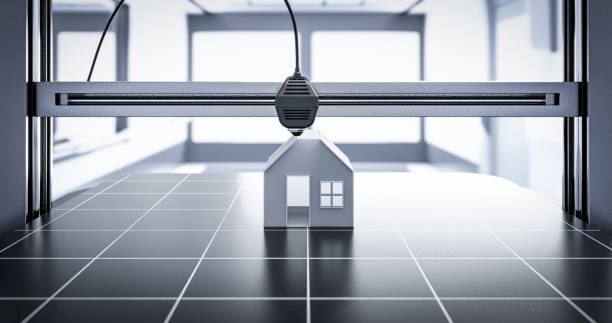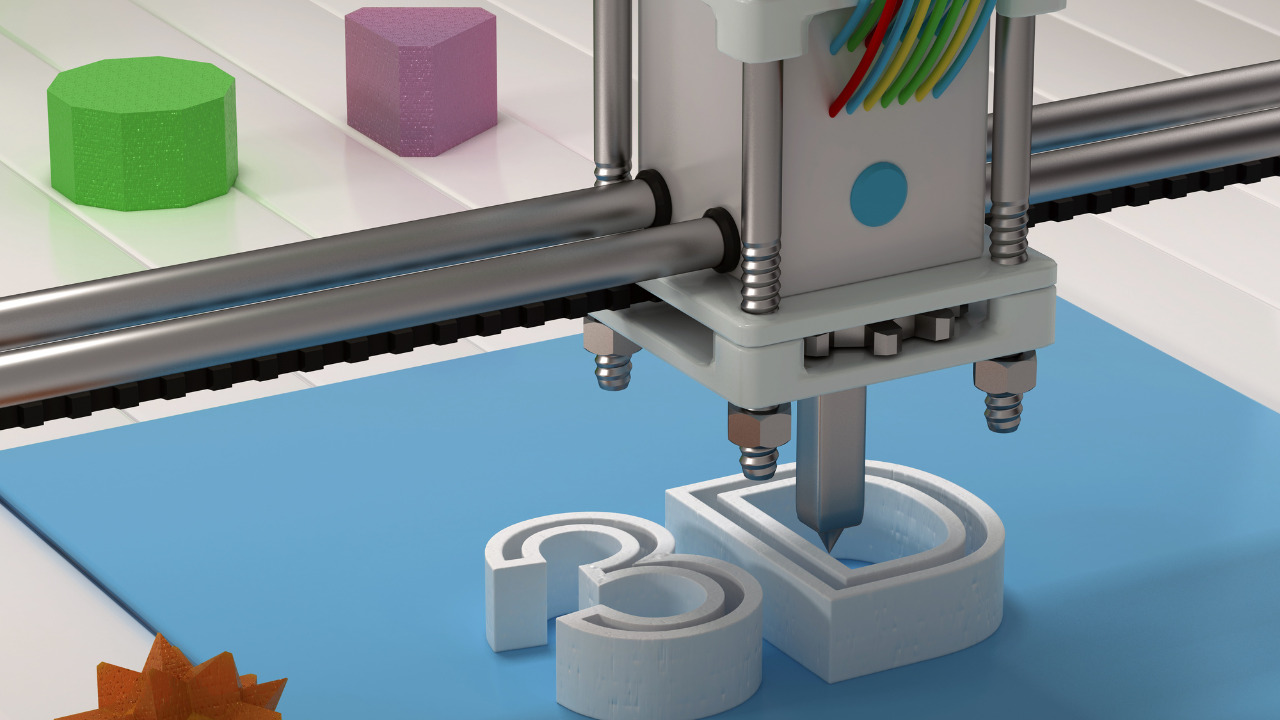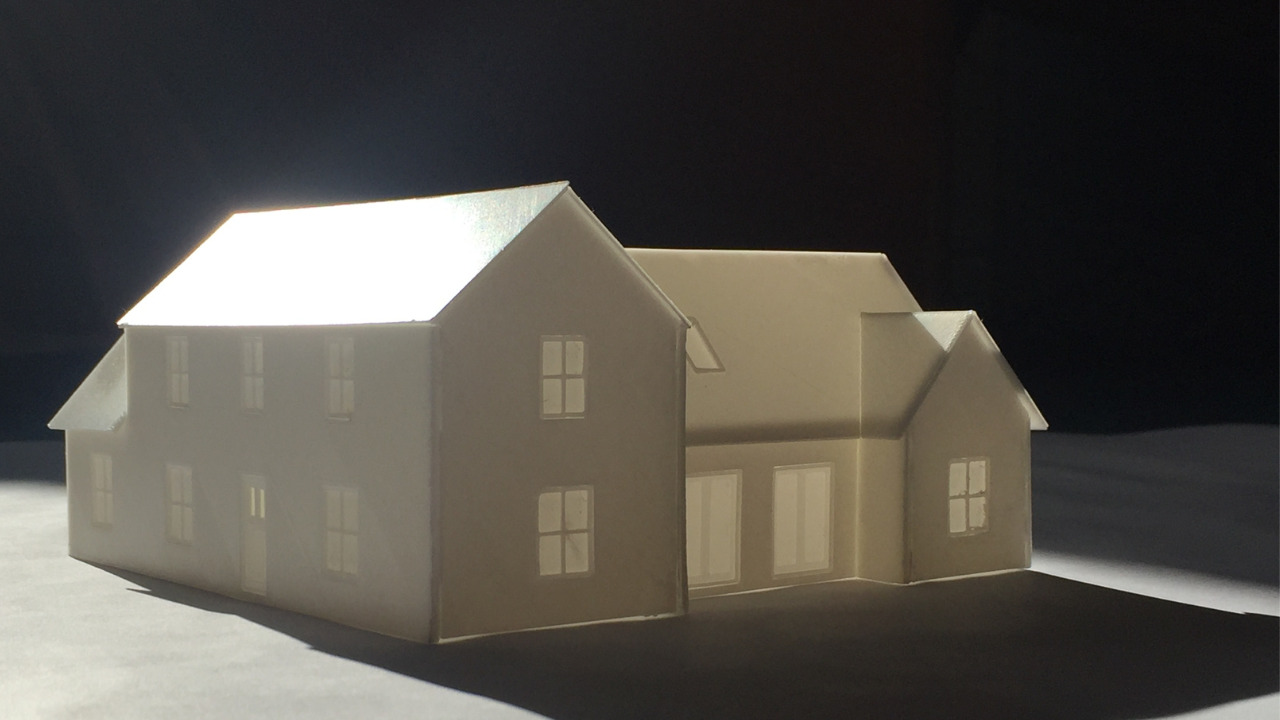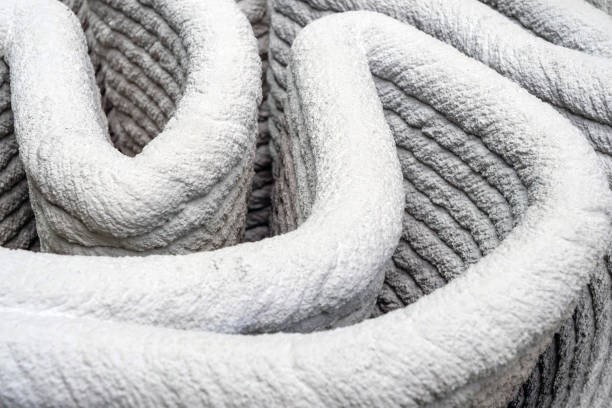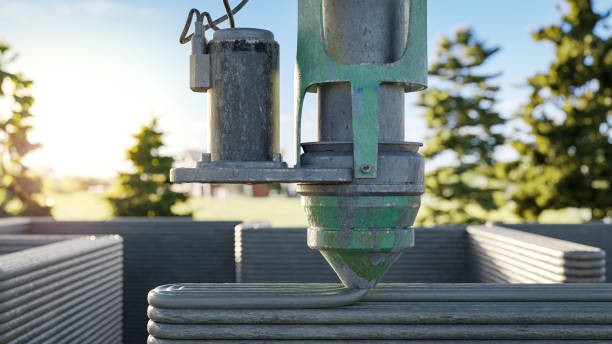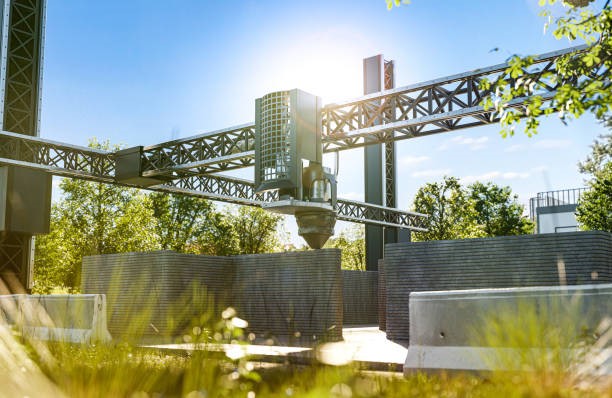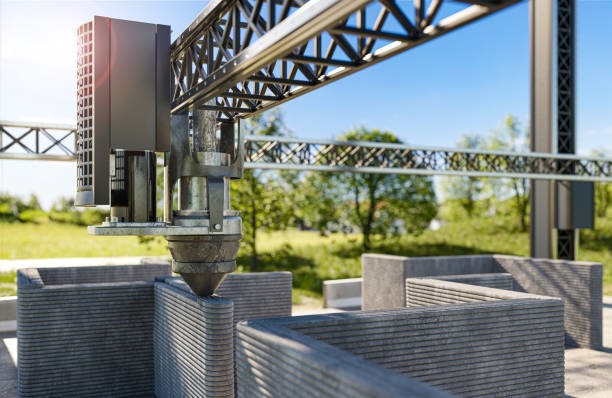To all the clients in que for a construction job done, did you ever a see printing machine in operation and wonder if it could print concrete for you instead of pages, so you wouldn’t have to wait for months for your structure to be brought into serviceability? Well, we are telling you its possible and will let you know how.
3D printed concrete is an advancement in concrete technology that has laid emphasis on automatizing the construction work instead of relying on manual labor. This means that you can literally use printing machines to place concrete in layers. The printer is fed with a concrete mix and it extrudes it to where it is to be placed. Doesn’t it sound amazing? It does, for sure; however, it is easier said than practically achieved and we will walk you through all the pros and cons of it.
3D printing is a complex science and a wide variety of additives can be used to achieve similar results. Many of the 3D printing companies have developed their own designs to suit various project requirements.
Prior to jumping into how a house can be constructed using 3D printed concrete, let us first discuss at length the essentials of 3D printed concrete material, how it is produced and what makes it so demanding in contemporary house construction.
Table of Contents
What is 3D Printed Concrete?
3D printed concrete is a concrete type that essentially contains all ingredients of a conventional concrete mix but with the exclusion of coarse aggregates or crushed stones and the inclusion of a set of additives that impart the desired properties. It is an optimally-flowable and consistent concrete that can be extruded easily using a printing machine by adding concrete layers on top of each other to create structural elements such as walls.
The printing machines extrudes the concrete fed into it from a nozzle as it moves along the member length which is to be cast. When one layer is completed, the machine traces the same path yet again and the cycle is repeated till the required height and member dimensions are achieved.
Now, think about using only a 3D printing machine (that is automatically operated) for constructing your house. Wouldn’t it be less labor-intensive and expedient? Sounds great, right?
Why is 3D Printed Concrete named so?
The reason for calling it 3D printed is because the concrete mix comes out of a 3D printer to create various shapes precisely. This advanced technology has taken construction to a whole new level and it is termed as “additive manufacturing” because it involves adding layers on top of each other to create the final product.
Ingredients of 3D Print Material (Concrete)
The main ingredients of 3D print material are cement, sand, water and some additives that account for 10 to 15 percent of the mix design but play a pivotal role in making the material suitable for use.
- Cement is used a binding agent and provides confinement to the other ingredients and holds them together.
- Water acts as an activator for the process of hydration. The hydration reaction is only commenced once water and cement come in contact with other and this reaction continues for as long as no cement grain remains unhydrated.
- Sand is used as a filler material and in 3D printed concrete, it contributes to a greater volume of unit concrete than in conventional concrete. This is because sand replaces the coarse aggregates in 3D printed concrete and the aggregates used in it are all sand grains.
- Additives or admixtures, as the name indicates, are add-ons in concrete and are used to modify its properties as per requirement. A whole bundle of admixtures is used in making this concrete and we can certainly say that the success of failure of this concrete mix is largely governed by these additives. The types of additives used, their proportions and the method by which they are combined play a key role in dictating the properties of the printing material.
Properties of 3D Printed Concrete
A 3D print material is essentially a mortar as it does not contain large pieces of aggregates or crushed rocks as is the case with conventional concrete manufactured in ready-mixed plants. It is comparable to the mortar that is used for plastering and flooring purposes.
The primary aggregate used in 3D print material is sand and it accounts for roughly half of the total volume of dry ingredients in the concrete.
Achieving the proper characteristics of 3D print materials is a complex science but can be made possible through proper mix design, rigorous testing and a high standard of quality control.
Following are the three main characteristics of 3D printing concrete;
-
Extrudability
It is an important property of concrete before it has set and hardened. It is defined as the ease with which the printing material can be extruded with consistency out of the printing nozzle. 3 factors govern the extrudability of a printing material and these are;
-
Viscosity
It is the state of being thick, sticky and of semi-fluid consistency due to internal friction. In case of 3D printing material, the viscosity is a function of the quantity of water added. Higher is the water quantity, lesser is the viscosity and vice versa.
The viscosity of traditional concrete is much less in comparison to that of the 3D print concrete and this allows it to flow freely under the force of gravity. However, the viscosity of conventional concrete cannot be replicated for 3D print concrete because if that is so, you will not end up with walls; rather; you will end up with a puddle or pile of concrete.
On the other hand, if very less quantity of water is added to the dry ingredients, it will result is very high viscosity. Now, this can be a problem, too. This is because, if the concrete-like paste is very thick and less flowable, it will clog in the hose and will not be extruded easily. Given this, for 3D print concrete, the quantity of water has to be carefully monitored to get the finest results.
It is experimentally determined that even a 3 percent difference in the water content can mean the difference between printing a puddle and clogging the printing machine. However, water is not the only ingredient in the printing material that affects its viscosity.
Water-reducing admixtures such as plasticizers and super-plasticizers are commonly used to alter the workability and plasticity of concrete without the addition of water. Most of the 3D printed concrete is made by properly proportioning the plasticizers to get a good balance of viscosity and flowability.
Another factor that impacts the viscosity of 3D print material is thixotropy. It is defined as the property of becoming less viscous with increased shear stresses. Consider, for example, honey; the more you give it a stir, the more liquid-like it turns out to be. Similarly, when 3D print concrete is subjected to vibrations, its viscosity decreases as the entrapped air is removed. This property allows the concrete to retains its shape the instant it moves out of the nozzle.
-
Pumpability
Another factor that influences extrudability of 3D print concrete is its pumpability which is defined as the material’s ability to be mechanically pumped without using any manual labor. The material should be pumpable in the dry and wet state.
-
Aggregate Size
The size of aggregates used is another determining factor when it comes to concrete extrudability. In conventional concrete, large aggregate sizes are used but if you use the same for 3D print concrete, not only will you end up clogging the hose but also with an inconsistent extrusion process.
Even if the large aggregates passed through the hose lines, they would still result in inconsistencies in the extruded layers and voids between them. The entrapped air is a source of structural weakness in concrete and is never desired.
It is to be kept in mind that vibrating the concrete is not essential in case of 3D print concrete because the use of fine sand and consistent mixing process prevent air bubbles from getting trapped in the mix.
-
Short Flow Time
Just like extrudability, short flow time is also the property that is measured in the plastic state before the concrete has set or hardened. Before we jump into why is this an important characteristic, let use first discuss a few terminologies.
- The flow time is defined as the time interval between the instant water is brought into contact with the dry ingredients and the instant the wet mix loses its flowability and becomes stiff enough to bear its own weight and the weight of the next print layer above without deforming. However, even at the end of this stage, the concrete is sticky enough to be able to bond with the overlying print layers i.e., it does not lose its adhesion. The end of the flow time marks the onset of the setting time.
- The setting time begins once the material is already adhered to the adjoining layers and it ends when the printing material completely loses its plasticity and feels totally stiff when touched. Once the flow time ends, the setting time should proceed rapidly because each laid add additional weight to the underlying layers.
Admixtures such as accelerators can be used as a catalyst to expedite the setting of the 3D print concrete. They increase the rate of hydration reaction and cause the curing period to begin sooner. Accelerators are used in almost all types of 3D print concrete but the type and relative proportion of the admixture may vary from one mix to the other depending upon the required level of performance and the prevailing environmental conditions.
The surrounding temperatures in which the building is to be constructed impacts the setting time a great deal. High temperatures speed up the hydration process and the setting time dwindles. At low temperatures, it is just the opposite.
- The cure time begins once the setting time ends. The curing process takes significantly longer time because curing essentially means to prevent the escape of water from the concrete so that the same becomes available for the strength gain process and continued hydration.
A properly cured concrete provides volume stability, resistance to freezing and thawing as well as abrasion and scaling resistance. The curing time span depends on various factors that include mix proportions, specified strength, size and shape of the concrete member, ambient weather conditions, and future exposure conditions.
-
Compressive Strength and Durability
This property comes to limelight once the printing material or concrete has hardened and cured. For concrete, both as a material, and as a structure, the compressive strength is the most important property because all concrete types are inherently strong in compression.
The compressive strength of 3D printed concrete largely depends on the mix design and the types of admixtures used in the manufacturing process. In addition, proper curing is key to an optimum strength gain in it.
Manufacturing of 3D Printed Concrete and Application for a House Construction
3D printed can effectively be used for the construction of houses or residential units. However, the construction process demands precision and heedfulness at each stage to get a fool-proof final product.
The following steps will serve as guidelines in the manufacturing and application of 3D printed concrete for a house construction.
- The first step (and probably the most important of all) is getting the proper mix design for the concrete. The ingredients of 3D printed concrete are more or less the same as conventional concrete with the exclusion of coarse aggregates or crushed rocks. However, the relative proportion of various ingredients is what draws a line between the two concrete types. For 3D printed concrete, careful material selection and proportioning is even more important in order to not end up with a concrete puddle. Appropriate mix design involves targeting a concrete mix that is just of the perfect consistency, can easily be extruded from the nozzle but remains in place when it comes out of it, and is neither too thick nor too flowable.
- Once you have decided the material proportioning, (by the way, many companies that offer their services in 3D concrete printing have some pet mix designs in house that they follow to get a set of required characteristics) the next you have to prepare the concrete mix. A normal practice that most companies cling to is that they transport the dry mix to the site and later on add water to make it wet and plastic. The mixing of ingredients is carried out in a specialized mixer and due consideration is given to carefully monitor the mixing stage so that the mix has the desired properties.
- Once the 3D print material or concrete is prepared, it is transferred to the 3D printer. To transfer it to the printer, you may use a pump or any other specialized delivery system.
- To extrude the concrete in order to get the desired shape, it is important to have your house design prepared. This can be done on a software that creates a 3D model of the structure and this model is transferred to the printer. Based on the design fed, the printer then extrudes the concrete layer by layer, placing each layer on top of the other. The movement of the printer is along the x, y, and z axes and it deposits the concrete in the correct location.
- Just like any concrete type, the 3D printed concrete also requires curing to achieve the target strength. The process of curing is carried out once the printing is complete and the layers have set.
- After curing the concrete for the requited duration, any additional finishing operation may be carried out.
How to Carry Out House Finishing if 3D Print Concrete is Used?
Your mind must be wondering over how a house made from 3D print concrete can be finished aesthetically? We recommend you to hold on and keep reading as we unfold the aesthetics this 3D print material can impart once you give it some finishing.
The finishing of 3D printed concrete house is done differently than that of regular masonry houses. However, you can target any color you want your exterior and interior to look like.
The following steps can be used as a guide for the finishing of 3D printed concrete house.
- Once the 3D print concrete layers are placed atop each other and the concrete structure is put to ground as a whole, the finishing work may begin. The structure at this stage is nascent and ready to be given a customized look. The first step is to prepare the surface to kick start your finishing process. This involves smoothening the rough edges and clearing the surface off any dust or debris.
- A primer may then pe applied to create a surface that provides a better adhesion.
- The finishing coat for concrete surfaces is usually a skim coat. It is applied on top of the priming coat and it creates a smooth, finished look.
- After the skim coat has dried, you may apply wallpaper or any other customized finishing you want to go for.
- Lastly, the surface is sealed using a sealant to protect it from moisture ingress and other environmental impacts.
Pros and Cons of Using 3D Printed Concrete for a House Construction
Just like every picture has two sides and the side that attracts us the most is the one we look at for a longer time, the use of 3D printed concrete for the construction of a house has its own merits and demerits and we shall walk you through both these flip sides.
Following are the plus points of using 3D printed concrete for a house construction;
- 3D printed concrete construction can help expedite your construction work and this can lead to significant time savings. The structure or house can be brought to usage in the shortest possible time and what else makes a client happier than getting to know that they can shift in the new house quickly.
- With 3D printed concrete, the construction largely becomes automated by printing machines and the manual labor work reduces a great deal. This can lead to savings in labor costs.
- The generation of wastes is reduced in case of 3D printed concrete unlike manually worked concrete. This is because in the latter case, the pouring and placing of concrete is carried out by labors and owing to human errors, material wastage sometimes becomes unavoidable. However, if 3D oriented concrete is used, this wastage is reduced because of machines performing construction work otherwise to be done by humans.
- The precision in construction work can be achieved by using this printing technique. The execution errors can also be eliminated or reduced using 3D printed concrete and the customized exterior and interior can be made to look fool-proof.
Apart from the advantages of using 3D printed concrete, there are some drawbacks and also, this concrete is not recommended in every case and for all types of structures.
Following are the drawbacks of using 3D printed concrete in a house construction;
- The budget for a house construction usually makes it less preferable on part of the clients to go for 3D printed concrete as the main construction technique.
- This technique is relatively new in the market and many clients do not even know what it is and how it will work. Therefore, they feel reluctant to invest their money in something that absolutely know nothing of. However, in years to come as more research studies will unfold and this technique will be scaled up, it might become the go-to construction technique. In this regard, the companies that specialize in make 3D printed concrete should disseminate more information about this concrete to the end users or clients so that the benefits of this construction technique can be effectively brought to practice.
- For 3D printed concrete, special additives are to be added that can both be expensive and have limited availability.
- The use of 3D printed concrete is not very practical and viable for large-scale or mega construction projects.
- The initial cost of this type of construction is very high and it requires a good understanding of this advanced concrete type for its error-free manufacturing.
Despite all these drawbacks, 3D printed concrete can be very promising if it is scaled up and researchers put more interest in unfolding ways it can be effectively used and applied.
Cost Comparison; 3D Printed Concrete vs Conventionally Poured Concrete
The costs that are incurred in each case depend upon several factors. These include the project type and its complexity, labor and equipment costs, location of the project, etc. However, if the general parameters for both these concrete types are kept constant, the following conclusions can be extracted based on experience;
- The initial cost of 3D printed concrete is very high because of added costs pertaining to specialized equipment, additives, printing machines, software, etc., all of which can be expensive to buy and maintain. Contrarily, conventional pouring and placement of concrete can be done using concrete mixers, wheelbarrows, pumps, etc. which are relatively less expensive.
- The material cost of 3D printed concrete is also more than that of conventional concrete. This is because in the former case, specialized additives are required to tailor the properties of concrete so that it becomes extrudable, has an adequate flow time, compressive strength and durability.
- Cost savings can be achieved in case of 3D printed concrete in terms of labor costs. Since most of the work is automated, the requirement of deploying large number of labors is reduced and so is the labor cost as a whole.
- In construction projects, the cost is directly related to the time. Therefore, in case of 3D printed concrete, time savings can lead to cost savings.
If we cumulate the above-mentioned costs’ breakdown, we can conclude that 3D printed concrete construction can be less cost-effective than conventional concrete. However, for some projects, the advantages it offers can be more striking and compelling than the cost requisite.
Strength Comparison; 3D Printed Concrete vs Conventional Concrete
The strength of each concrete type is largely affected by the mix design and how accurately the mix design is achieved. You might see conventional concrete outperforming 3D printed concrete in terms of compressive strength if it is properly designed and manufactured. In addition, the printed concrete also creates a plane of weakness and may also lead to strength reduction in the member.
However, if the mix design and preparation of 3D printed concrete is carried out with great precision, it will not fall short of the targeted properties and such a concrete will possess a fairly good compressive strength, comparable to conventional concrete.
Frequently Asked Questions (FAQs)
How much does it approximately cost to build a 3D printed concrete house?
There cannot be a definite answer to this question because for obvious reasons, the cost of any project is a variable number. It is influenced by a whole lot of factors. For 3D printed concrete, the costs can include the material cost, equipment cost, preparation cost, labor cost, etc.
The cost in each domain, as listed above, will also vary. For instance, if the size of your house is big, of course, the material cost will augment. Similarly, if you customize your house with great detailing in the exterior and interior walls, you are inviting more investment of money in your project.
However, the cost range for a 3D printed concrete house can be as low as $10,000 and as high as $300,000, taking into account all the influencing factors.
How strong is 3D printed concrete?
3D printed concrete is definitely a strong and durable material and can be designed to target a high compressive strength. However, the printing technique also greatly impacts the integrity of 3D printed concrete, and therefore, its strength.
Quantitatively speaking, compressive strength up to 50MPa is achievable using 3D printed concrete. However, this is subject to precision in material selection, concrete preparation and printing machine.
What can be the expected service life of a 3D printed concrete house?
A 3D printed concrete house is a durable structure and is expected to perform well for decades if properly maintained over time. Theoretically speaking, the service life of such a house can be as long as 75 years or even more.
How much time will a house construction take if 3D printed concrete is used?
The major advantage of using 3D printed concrete is that it expedites the construction work and reduces the construction time. You can construct a small-sized, basic house within 24 to 48 hours by printing concrete. However, for larger houses and detailed finishes, the construction time may augment accordingly.
If we compare the construction time of 3D printed concrete with that of conventional concrete, you will see a big difference between the two. This is because the labor work is increased in the latter case whereas everything practically becomes automated in the former.
Can 3D printed concrete be reinforced with steel rebars?
The answer is yes, 3D printed concrete can be reinforced with steel rebars that improve the structural integrity, compressive strength and durability of the structure as a whole. Prior to the printing process, steel rebars can be placed at their designated locations and the printed concrete is extruded from the machines and placed in layers, encapsulating the reinforcement.


